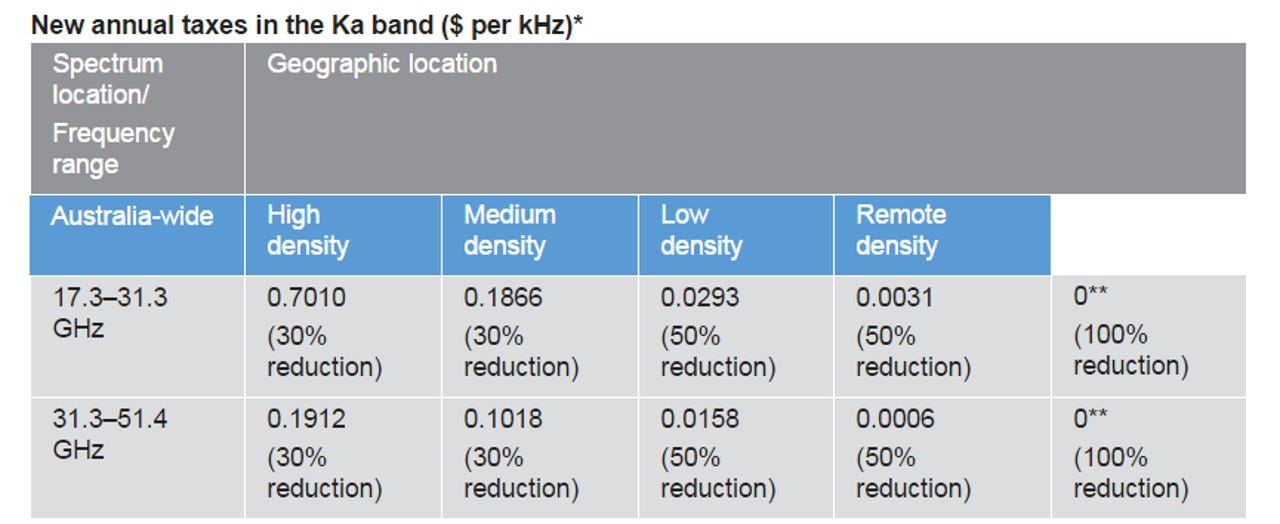ACMA slashes satellite tax rate to encourage investment

The Australian Communications and Media Authority (ACMA) has announced that the taxation rate for satellite licences has been reduced in an effort to improve spectrum efficiency and encourage investment in Ka-band satellite and space-based services.
The ACMA will decrease taxes for satellite services operating over the 17.3GHz-51.4GHz spectrum bands by 30 percent for Australia-wide and high-density area (HDA) licences; by 50 percent for medium-density area (MDA) and low-density area (LDA) licences; and by 100 percent for remote-density area (RDA) licences -- apart from a minimum tax of AU$39.57.
The ACMA also announced that it will encourage spectrum sharing by reducing its taxation of earth station spectrum by 30 percent where it is shared in co-frequency terminals located within 500 metres for earth stations in HDAs; 1,000 metres for MDAs; and 2,000 metres for LDAs and RDAs.
The ACMA will also remove the fixed annual tax of AU$279/MHz for non-geostationary orbit (NGSO) services licences operating in frequencies higher than 8.5GHz.
The federal government agency said it undertook the satellite taxation review as a response to concerns raised that the rates in Australia were higher compared to industry averages internationally, especially when taking into account the Ka-band's large bandwidth requirements.
Australian telco industry group Communications Alliance welcomed the new taxation rates, saying it would improve efficiency in using spectrum and increase investment in the Australian satellite industry.
"The ACMA has acknowledged that making Australia's pricing structure more aligned with international norms should mean that Australia can derive greater value from the space sector, which already contributes more than $4 billion per annum to Australia's GDP," said Communications Alliance CEO John Stanton.
Optus' satellite division owns the largest number of satellites covering Australia and New Zealand, with six satellites in orbit providing coverage to the region, while the Australian government's National Broadband Network (NBN) has launched two Ka-band satellites over the last year to provide high-speed broadband for the 400,000 eligible premises in rural areas.
While both Optus and NBN rely on satellite coverage for connecting those living in remote areas, however, the Australian Medical Association (AMA) earlier this month said NBN's satellite technology is unsuitable for telehealth, as it does not provide high enough data allowances and speeds.
Latest Australian news
"Regional and rural communities already face a range of disadvantages when compared to their city counterparts," AMA vice president Tony Bartone said.
"Many regional and remote areas have very poor internet connections, with relatively small download allowances, and at a much higher cost and slower speed than the services available in our cities."
NBN's Sky Muster satellite service provides speeds of up to 25/5Mbps and data allowances of 150GB per month, with an additional 50GB download per month for distance education students.
The AMA said it is specifically calling on the federal government to "develop measures to prioritise or optimise the broadband capacity available by satellite for hospitals and medical practices, either by exempting or allocating higher data allowance quotas, or by providing a separate data allowance", as well as extending its fibre, cable, and fixed-wireless network footprints and increasing mobile coverage where possible.
